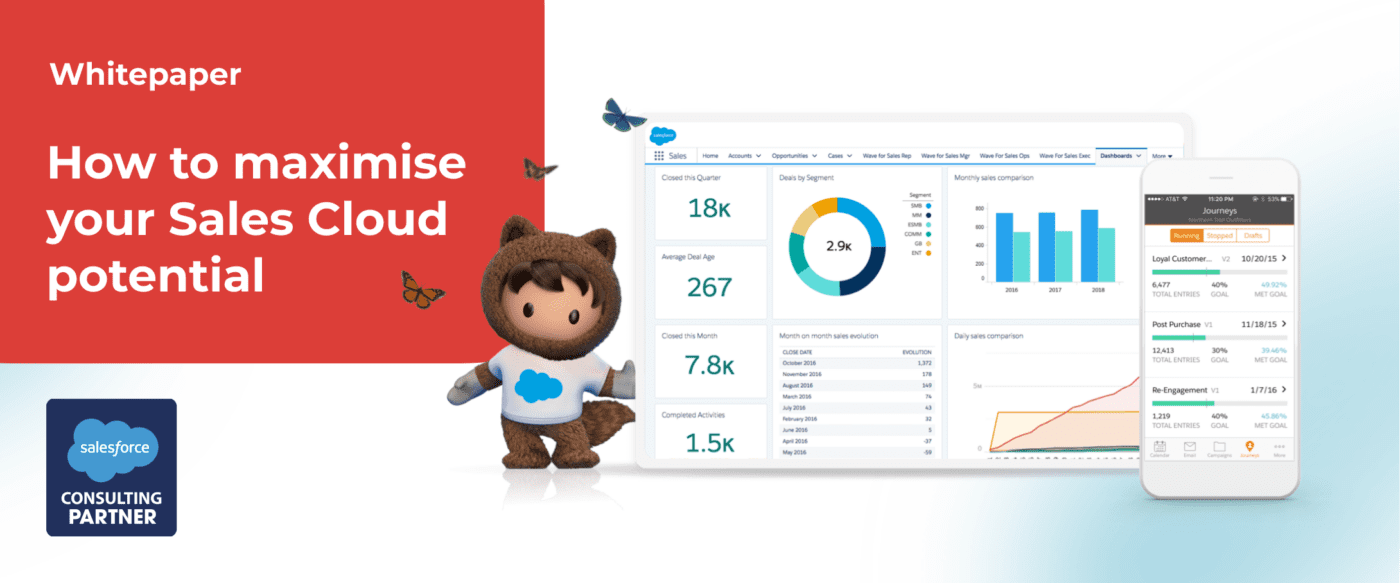Report by Hideki Hashimura, CMO at redk
Maximising the Potential of Sales Automation Technology
The underutilisation of sales automation, especially within Salesforce, poses a significant and widespread challenge for companies today. This translates into missed opportunities and suboptimal returns on investment. As seasoned Salesforce experts, redk presents a pragmatic solution-driven approach to sales automation.
We recognise the prevalence of data silos, disconnected tools, but particularly the absence of a strategic design in hindering businesses from realising the full potential of sales automation. This report delves into a comprehensive strategy that includes consolidating data onto a single Salesforce platform, ensuring real-time data management, leveraging predictive AI, harnessing generative AI effectively, and prioritising data security and privacy.
By embracing these principles, you will streamline processes, gain comprehensive insights, optimise prospecting efforts, personalise sales materials, and safeguard customer data. The result is a highly efficient, data-driven, and secure sales automation strategy that empowers organisations to excel in the competitive business landscape while achieving tangible growth and success.
READ FULL REPORT
1. Consolidate sales operations into one platform
Design sales processes to be streamlined in one single user interface
Many organisations struggle with disconnected tools and data silos that hinder their ability to make informed decisions and provide a seamless customer experience. Data becomes trapped in various systems, requiring manual effort to consolidate and interpret. This consumes valuable time and leads to inaccuracies and missed opportunities.
Reps only spend 28% of their week actually selling. The rest is made up of critical but tedious tasks, like prioritising leads, researching prospects and entering sales information. – Salesforce’s State of Sales Report
Unifying your customer data on a single platform within Salesforce to address this challenge requires design, experience and a deep understanding of how the data is going to surface for the users, or what we call actionable data. By doing so, your teams gain access to a unified and accurate view of every customer, enabling them to make more informed decisions. Here’s how:
- Consolidate Customer Data: Make an effort to understand and remove spreadsheets and or other disparate systems that hold data that can be shared across teams. Centralise your customer data in a data model, Salesforce, creating a single source of truth for your organisation.
- Real-Time Updates: Leverage omnichannel tools that can integrate activity data into Sales Cloud to update customer records with every interaction on the go. Whether it’s a phone call, a sales email, an interaction with digital content, or other marketing interactions, Sales Cloud should automatically update your contact records.
- Comprehensive Insights: Build a 360-degree view of your prospects and customers. Design and create an interface that enables your teams to access activity history, customer communications, internal discussions, and even insights from back-end and transactional systems like your ERP.
- Automate Workflows: Sales Cloud can help you implement guides for your sales representatives or account managers, thus helping staff make the next best move through each stage of the customer journey with automated workflows. This is a way to ensure nothing falls through the cracks, setting up triggers and tasks for each journey stage and securing a standard of quality.
- Smart Triggers: You can configure Sales Cloud to enforce specific tasks and prerequisites before advancing deals. For example, reps must confirm contact with key decision-makers before moving on to negotiations.
Adopting a single-platform approach eliminates data fragmentation, reduces manual effort, and empowers your teams with the insights they need to make strategic decisions that drive sales performance. It also helps you maintain continuity as staff churns without breaking the flow of conversations with clients.
What’s included:
- Consolidate sales operations into one platform
- Manage and access real-time data
- Utilise predictive AI
- Work with generative AI
- Stay secure
- Foster lasting success with sales automation










